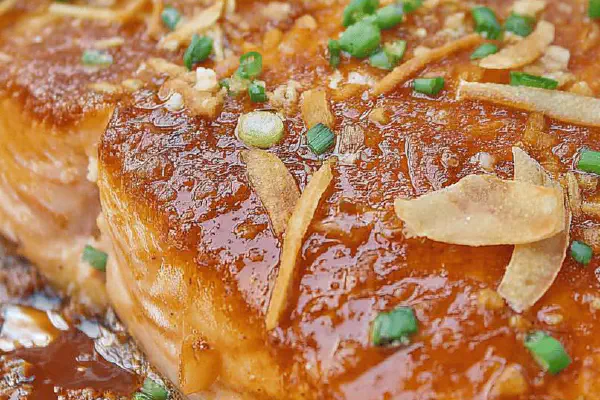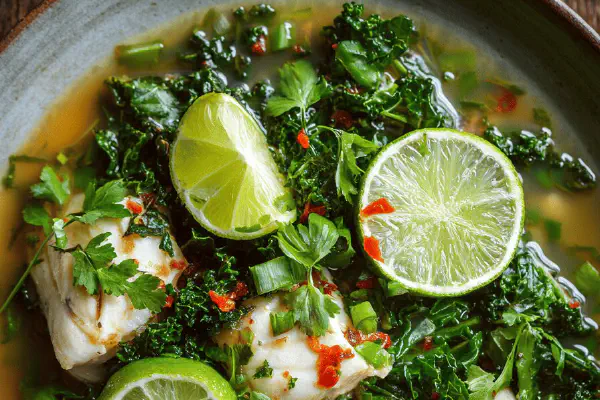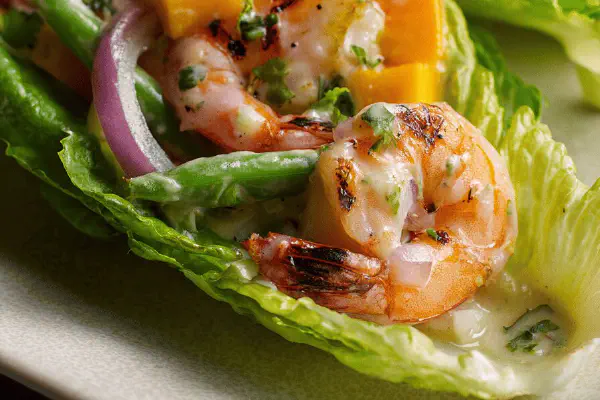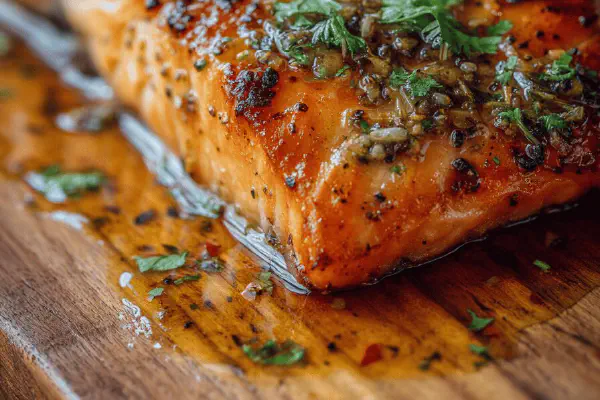Featured Recipe
Oven-Baked Teriyaki Salmon
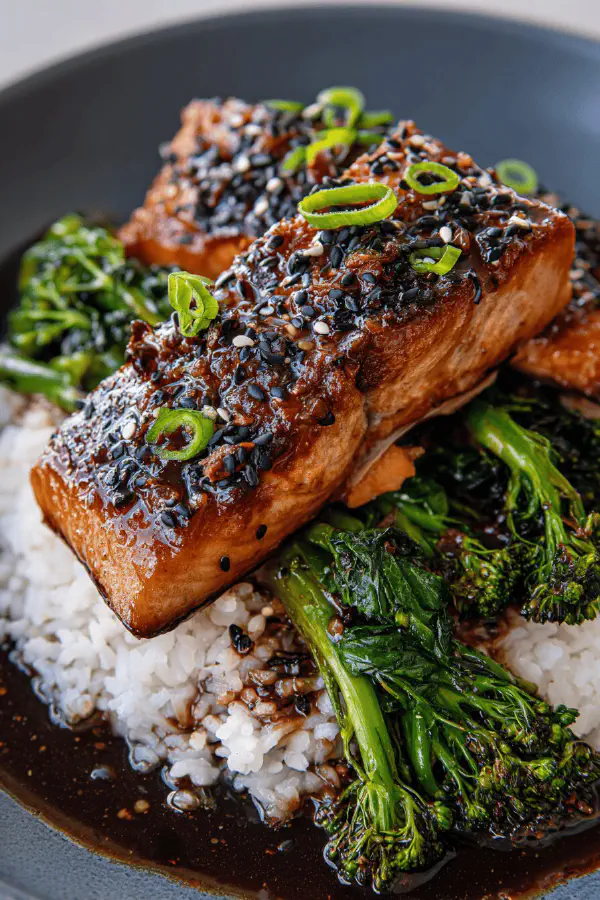
By Kate
"
Salmon baked in a searing hot iron skillet within a pizza oven, glazed with a reduced teriyaki sauce featuring tamari and sake instead of soy sauce and mirin. Garlic and shallot infuse the sauce, balanced with rice vinegar and a touch of gochujang for heat. Cooked to crispy skin and tender flesh, sprinkled with toasted black sesame seeds. Serve with steamed jasmine rice and wilted spinach or broccolini. Technique focuses on skillet heat management, sauce reduction, and visual cues for salmon doneness.
"
Prep:
15 min
Cook:
25 min
Total:
40 min
Serves:
4 servings
salmon
teriyaki
oven recipes
healthy eating
Introduction
Casting the skillet into the piping hot pizza oven—an intense technique for salmon skin crisping you won’t get on a regular oven. The secret starts with that blistering hot iron, locking moisture inside the thick fillets while rendering the skin into shards of crispness. Sauce takes a twist; tamari replaces soy sauce to avoid excess saltiness and adds earthiness, sake instead of mirin for subtle depth, with gochujang injecting a smokier, deeper heat than usual sambal oelek. Garlic and shallot add pungency and sweetness, simmered slowly until the glaze thickens like syrup. Watch for the telltale sound—pop and crackle as skin crisps—and that salmon flesh goes from glassy to opaque, signaling the perfect bite. The technique demands timing and attentiveness to texture and smell more than strict minutes. Avoid that slimy skin trap; drying well, letting that skillet do its magic. No guessing games with temperature; visual cues, sizzle sounds, and confident flipping. Even heat means rotating the pan inside the oven; you control the crust and the cooking. Black sesame seeds instead of white for nuttier flavor and stronger contrast on presentation.
Ingredients
About the ingredients
Brown sugar amount reduced slightly; too sweet overwhelms glaze. Tamari brings a subtle tamarind flavor differing from soy but keeps the salty savory backbone. Sake replaces mirin entirely, avoid substitutions with regular white wine which lacks sweetness. Gochujang swap adds gentle smoky heat and fermented umami, safer than raw chili pastes that can burn unpredictably. Use avocado oil or light olive oil for high smoke point; butter would burn in pizza ovens. Toast black sesame seeds yourself for best aroma—pre-toasted saves time but less flavor. Dry salmon skin thoroughly; moisture is the enemy here. Patience on sauce simmer; a quick boil yields watery glaze, too long and it hardens. Small shallot slices provide texture contrast against the smoother sauce.
Method
Technique Tips
Preheat skillet in pizza oven to max intensity for robust sear. Iron holds heat better than regular steel or ceramic pans, traps heat to crisp skin. Sauce simmer critical: allow sugar to dissolve completely, reduce heat after boil to avoid burning notes. Gochujang must dissolve and mellow in simmered sauce; too early a burn ruins balance. Dry fish before seasoning; if skin feels tacky, use paper towels liberally. Lower oven heat before cooking salmon to prevent scorched exterior and raw center. Timing depends on fillet thickness; use finger press test to check doneness—springy yet slightly resistant means perfect medium. Rotate skillet halfway for even cooking; pizza ovens can have hot spots. Flip salmon carefully, skin can stick and tear if forced. Serve immediately to keep skin crisp; moisture softens if left too long. Black sesame finish adds nuttiness, crunch and visual appeal. Pair with simple sides to highlight glaze and fish.
Chef's Notes
- 💡 Dry salmon skin well. Less moisture means more crisp. Pat with paper towels. It's key. If skin is tacky, don't season yet. Wait.
- 💡 Careful with sauce simmer. Too high and sugar burns. Low and slow works best. Watch for syrupy texture. Coat spoon but not too thick.
- 💡 Temperature control matters. Too high and algae the skin. Maintain medium-high heat in pizza oven once skillet hot. Rotate for even cooking.
- 💡 Fish flakes when ready. Check visual cues: opaque flesh, slight bounce when pressed. Don't overthink timing, observe texture change.
- 💡 Use avocado oil or light olive oil. High smoke point helps. Butter can burn in high heat situations. Avoid that aromatic disaster.
Kitchen Wisdom
What if salmon skin sticks?
Use a non-stick or well-seasoned skillet. Wait before flipping. Dry skin helps lift better.
Can I prep teriyaki sauce in advance?
Yes. Store in fridge for a few days. Warm gently before using. Adjust thickness if needed.
How about leftover salmon?
Refrigerate promptly. Eat within 2 days. Reheat gently to avoid drying out. Sauté briefly.
What's the best side to pair?
Steamed jasmine rice is classic. Broccolini or wilted spinach balances richness. Simple yet effective.
